A Headteacher’s “Wish List”
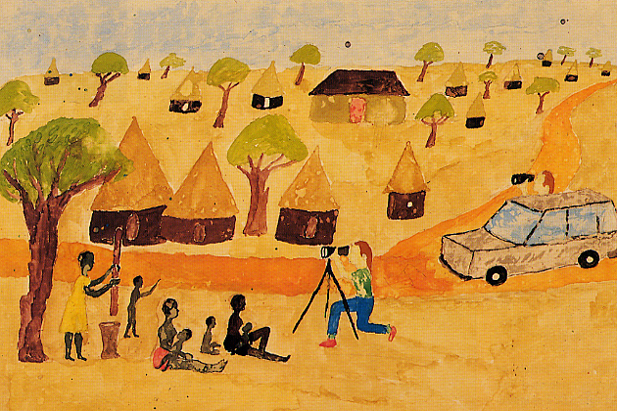
This painting titled “My Village in Sudan”, taken from the UNHCR Refugee Art website was done by a young Sudanese artist named Bor Alier. Bor lives in Kakuma and was aged 17 when he did this. He explained his painting this way:
“People came to visit our village and ask how we were and what we needed. Then they took pictures and went away. We thought they would come back. Then our village got burned and we had to run. We thought they would come back. Still they did not come back.”
He is describing a phenomenon known as poverty tourism, when people visit an area suffering from extreme poverty or war and may be truly moved by what they see but do nothing after they return to their normal lives. To be fair they may want to do something, but wanting to do something and knowing how to do it is often complicated and daunting in itself. This haunted me as a Peacekeeper when I worked in many such places. I was always haunted by the same question, in the end just what will I do? Was I giving people false hope?
Another poignant picture is this one titled “The Walking of the Many” by 15 year-old Sudanese artist David Kumcieng, also taken from the UNHCR Refugee Art website. Kumcieng says:
“We wanted to run, but we had to walk because we were tired and so hot and so hungry.”
He goes on to say how so many died, mostly the young, the old and those who were too hungry to go on.
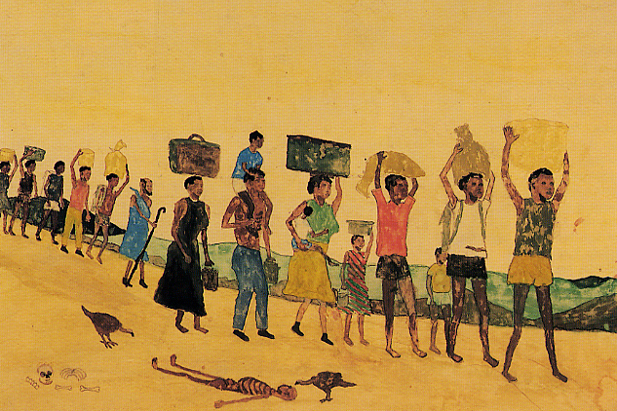
The walking of the many. Painting by David Kumcieng, aged 15, Sudanese, Kakuma Refugee Camp. (c) UNHCR / David Kumcieng
These incredible works of art are simple: almost primitive in perspective and execution yet so riveting in their directness with their subtle understatement and done with such touching humanity. They describe far better than any book I could write how I felt and what was burned into my memory. I had to do something beyond being a poverty tourist.
A Headteachers Wish List
These painting were done by youngsters who fled to Kakuma, and in a recent blog I discussed how a colleague and I visited this area in northwest Kenya. The UNHCR staff showed us around and took us on visits to some of the schools where we had a most interesting and, as it turns out, eventful discussion with the Headteacher and staff of Horseed school.
We were greeted by a Teaching Assistant and some students at the gate who kindly took us to the office of the Headteacher.
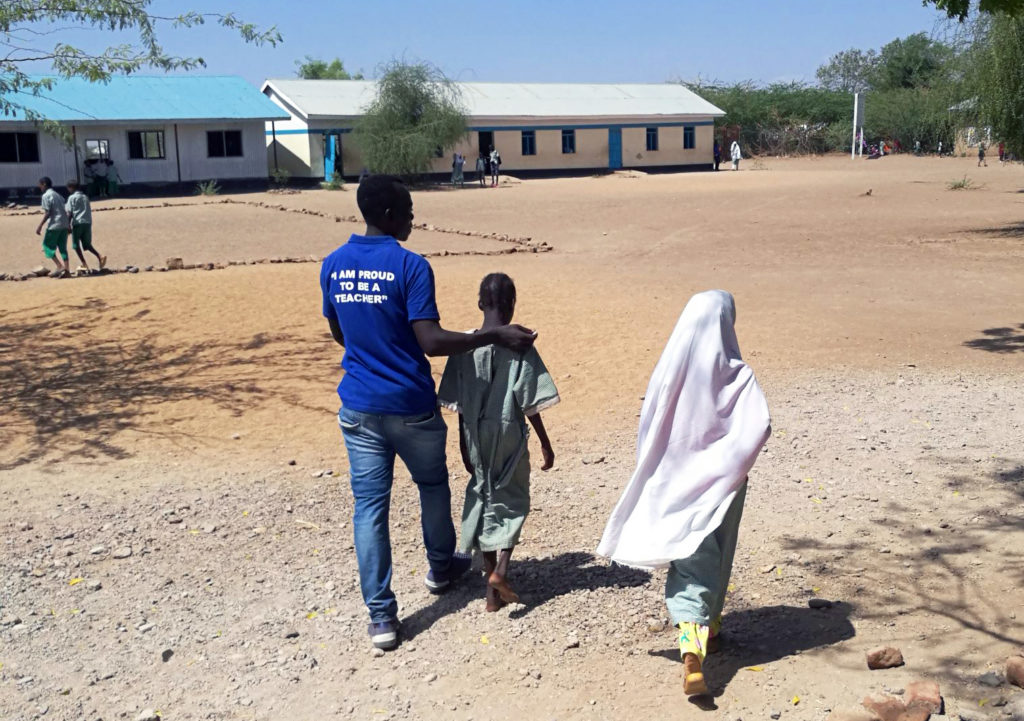
Horseed School, Kakuma Refugee Camp, Kenya. ©Ronald Quejas-Risdon
As I have described in a previous blog post here, Horseed primary school has some 2,442 students in grades one through eight. The majority of student families come from Somalia, South Sudan and Ethiopia. It also has a larger than usual number of female students at just over 53%. Horseed, and other schools like this, have also benefited greatly from the United Nations Association program Adopt-A-Future.
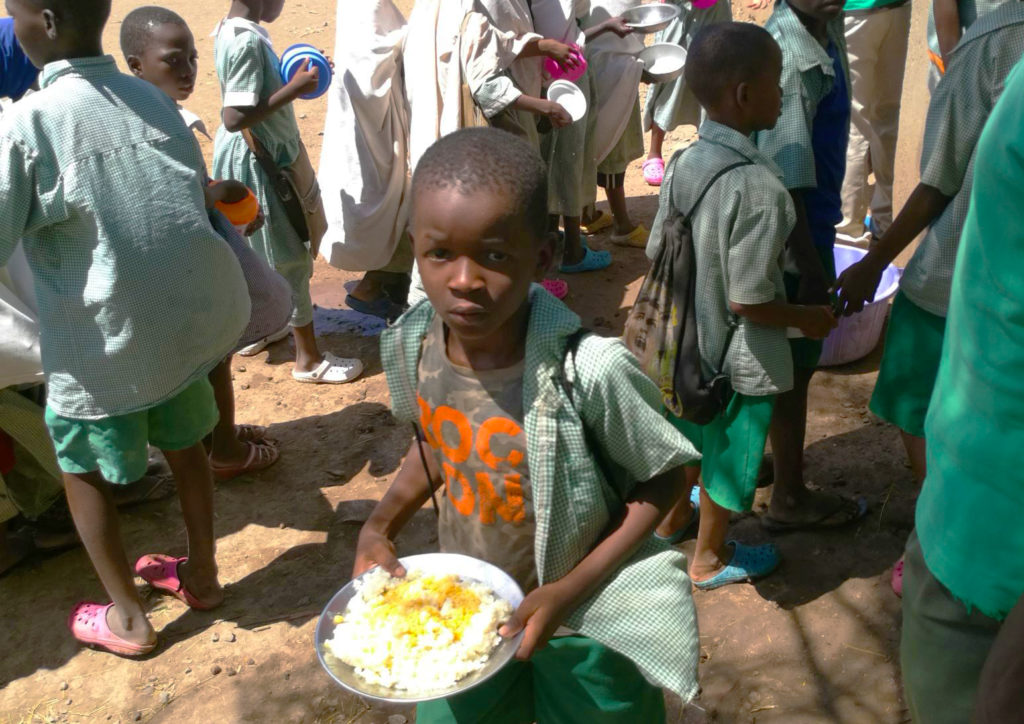
Student collecting his lunch of rice and pulses at Horseed School, Kakuma Refugee Camp, Kenya. ©Ronald Quejas-Risdon
We arrived at lunch time and here, like hungry little scholars everywhere, the children eagerly line up. Presenting his plate to the kind kitchen lady, this little boy has just collected his lunch; a simple meal of rice and pulses which is a welcome addition to the daily diet for these children.
As the children sat in groups under trees or in vacant classrooms and ate, the Headteacher showed us around. He told us of the dire conditions, the classrooms overcrowded to bursting, the lack of desks and supplies, the needs and shortages all too common around the world to schools such as this. This has always been so astounding to me, to think that we continue to underfund basic education at a level that can only be described as criminal, when education is perhaps the best thing we can do to end so many social ills, extremist movements and suffering around the world.
As we ended our tour and headed back to the Headteachers desk (he did not have an office, merely a desk in a corner with boxes stacked up as walls), my colleague casually asked the Headteacher what he would do to improve things. Without hesitation he shared the following “wish list” with us:
- A school library especially for the youngest children
- An environmentally protected room for computers
- School supplies
- A proper staff room for teachers
- Improved security fence for the school compound
And then a smile came over his face. “A dream,” he said, “would be to build a small auditorium or a large community meeting room so there would be a place out of the sun and rain, a place for families to come see what their children were doing.” I was so struck that he never once mentioned needing an office for himself. So, after a little further discussion, we added another item to the list:
- An auditorium/meeting room with a portable divider which could be used as additional classrooms
Have you ever noticed that once spoken things seem to take on a life of their own?
Still, as we left the school, I could not shake the feeling that we had given them false hope by even asking about this. That they would dare to dream again, but as the young artist so clearly put it, “We thought they would come back.” Was I just repeating what they had seen so often and what was so eloquently stated in the above artworks? Take a picture, commiserate with them and go home with my guilty conscience soothed? How could I help them get any of these things they needed so desperately?
So, with a list from Horseed School and a challenge from the Headteacher, I returned to my comfortable existence in the UK and the US determined to at least try.
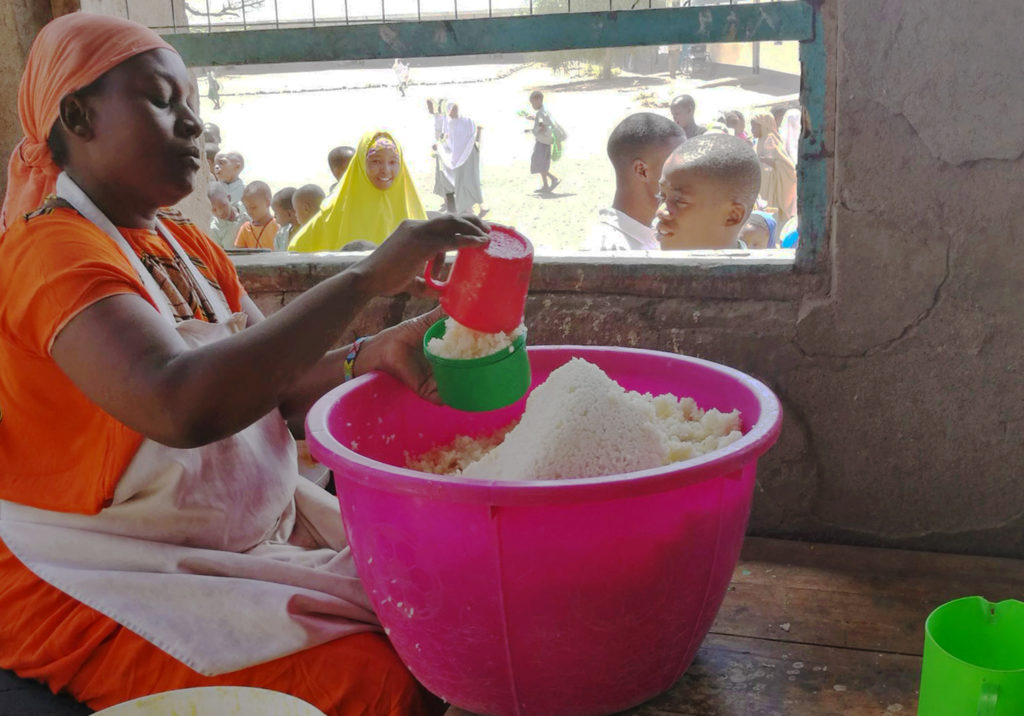
Lunch being served at Horseed School, Kakuma Refugee Camp, Kenya. ©Ronald Quejas-Risdon
Twist of Fate
But this time proved to be different. In June 2019, a few short months after I left Horseed school with their wish list in hand, I was in Washington, D.C., attending the annual United Nations Association Leadership Conference. One of the sessions was an update on the Adopt-A-Future program.
Having recently visited Kakuma, and apparently the only one at that session who had ever actually been there, I could not help but make impromptu contributions and observations when questions were brought up about actual conditions in the field. As one of the panel members later put it, I became an ad hoc member of the panel.
After the session, not being sure if my participation was helpful or perceived as interference, I was quietly edging towards the door when I was approached by one of the presenters, Amit Kadapia. I was relieved when, after introducing himself, he thanked me for my comments.
Amit is still young considering all that he has accomplished. While serving on UNA committees and programs such as Adopt-A-Minefield and Adopt-A-Future, he also formed The Unforgotten Fund in 2007 where he currently serves as president. With an emphasis on fieldwork, the goal of this NGO has been to perform charitable projects that complement and support the United Nation’s programs in the field. Starting with several projects in India, the fund moved on to Sub-Saharan Africa and recently completed a health clinic in the massive Rohingya refugee camp in Bangladesh.
When Amit heard me talking about my career with the UN and my fieldwork in Kakuma he immediately asked if I would be interested in working with them as a member of the Board of Directors.
The Unforgotten Fund
Here was the opportunity I had been looking for, the twist of fate that would allow me to put my plans into action and to build on what I had done as a Peacekeeper.
As I pointed out in my book Keeping the Peace, there are times when you realize something important and potentially momentous has happened; when a series of interests, hopes, events in life which seemed similar but not quite aligned are suddenly connected. In a flash you are given the opportunity to act on them. In my book I describe the completely unexpected appointment as Head of Office for the Abyei region in Sudan and here was another such opportunity: to be an important part of an organization that would allow me to do the fieldwork I loved to do.
I gladly accepted Amit’s offer to join The Unforgotten Fund (unforgotten.org) as Director for East Africa, and in my next blog I will describe a return visit to Kakuma to finally set in motion the “wish list” projects.